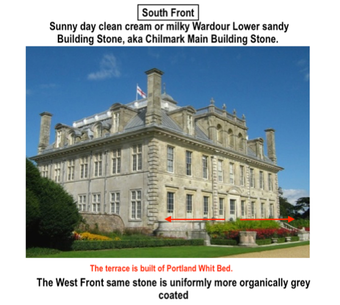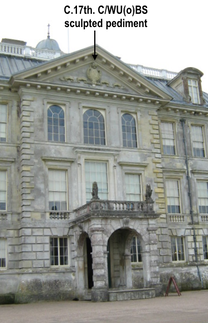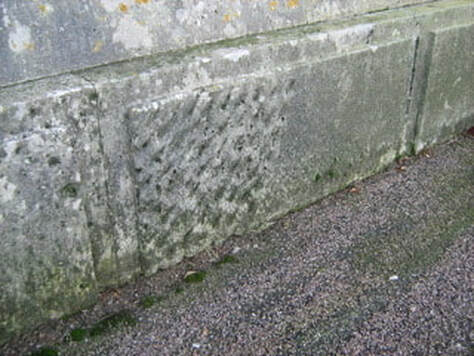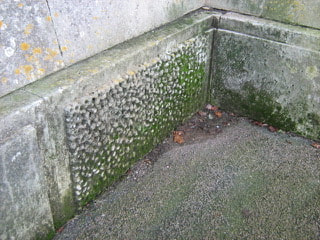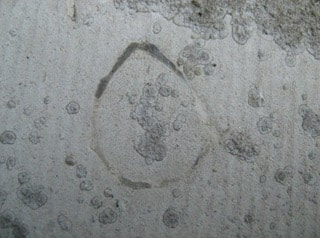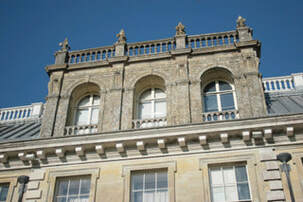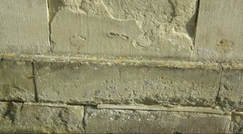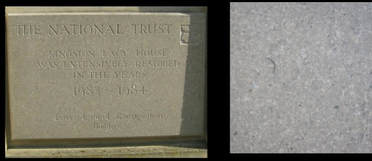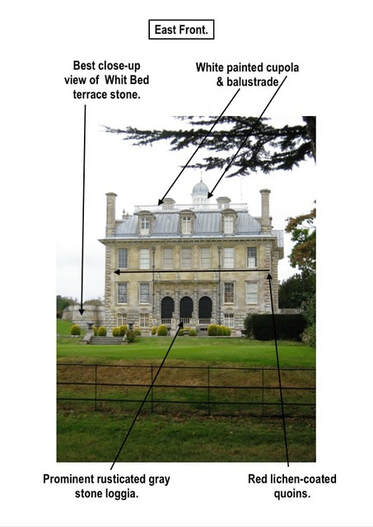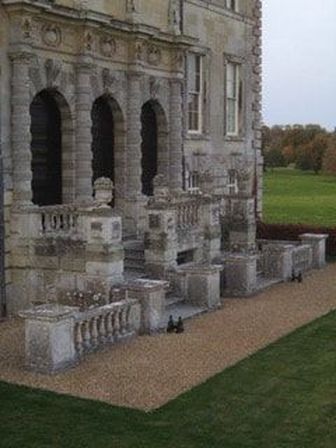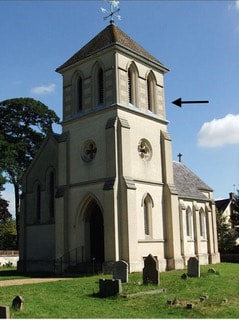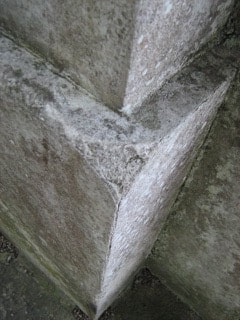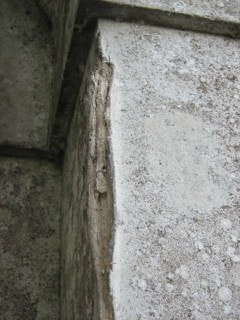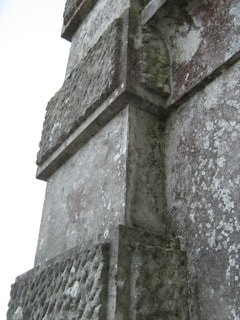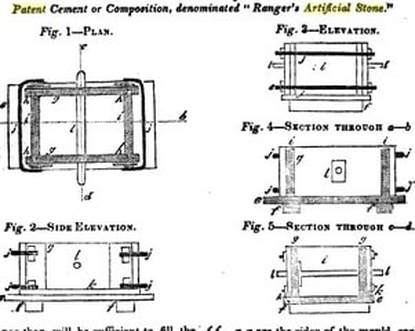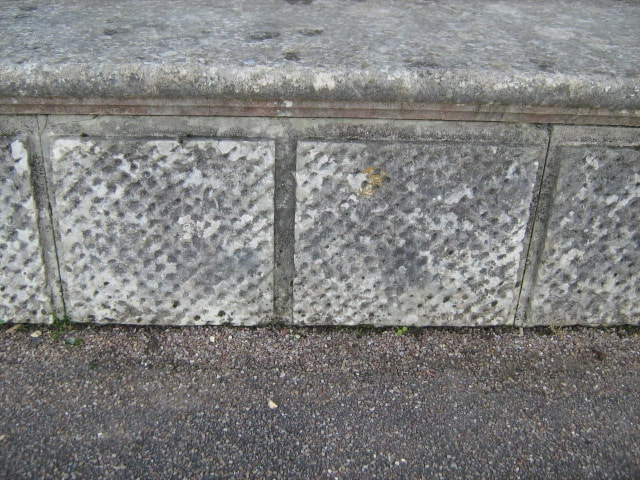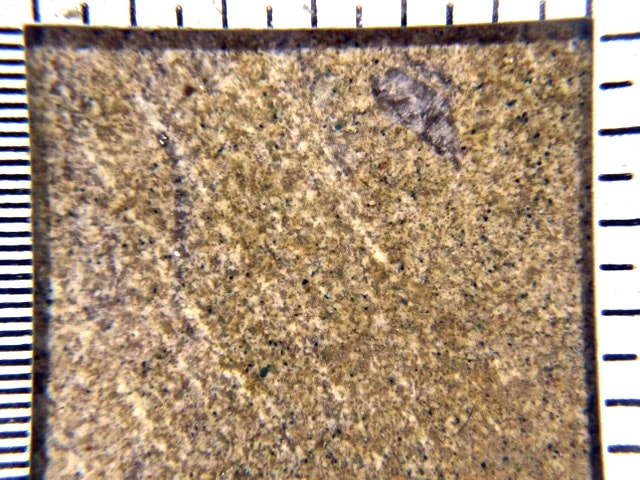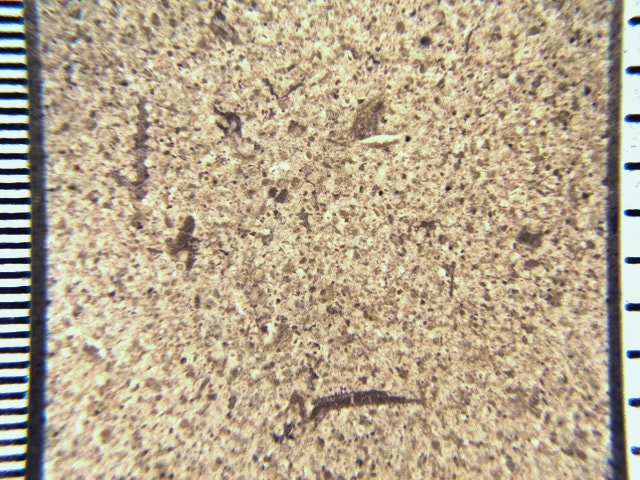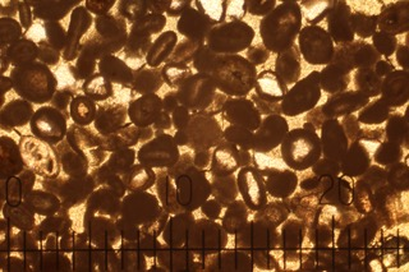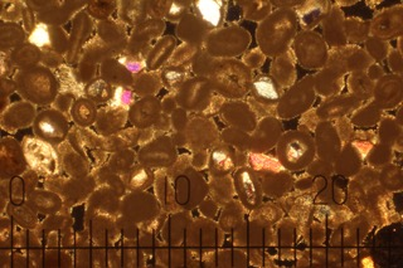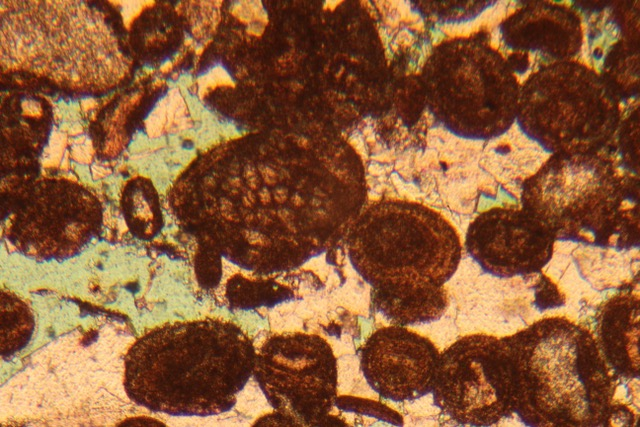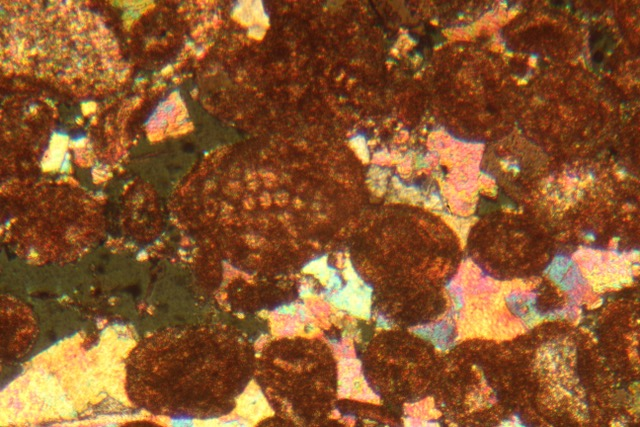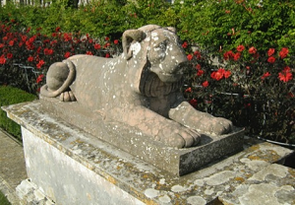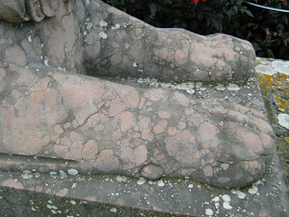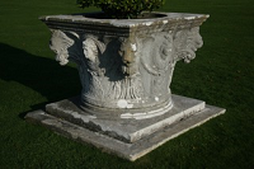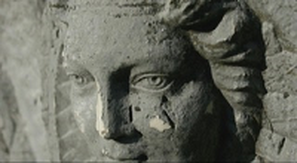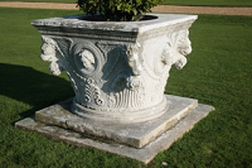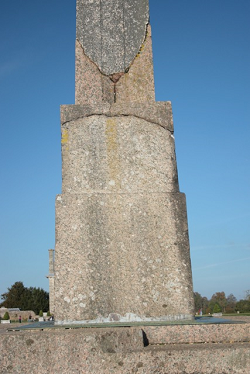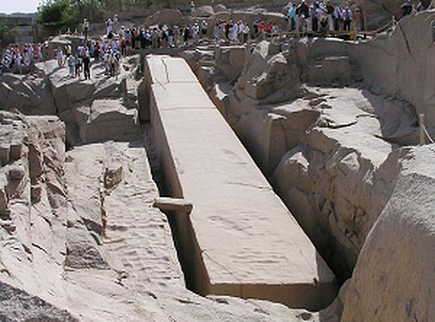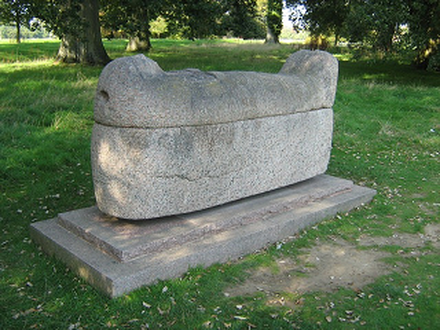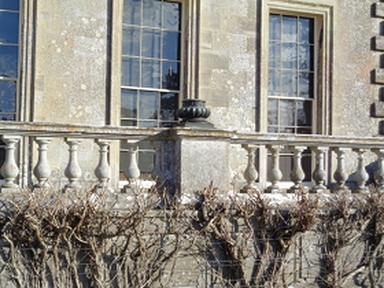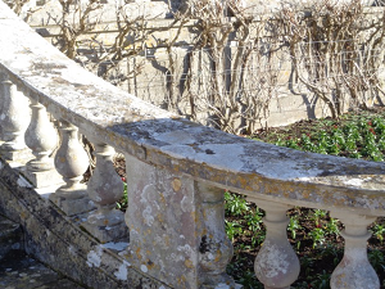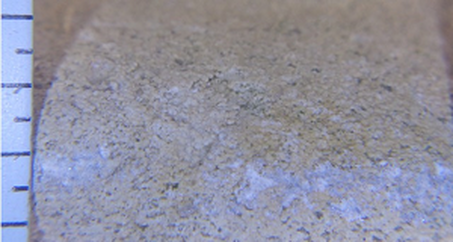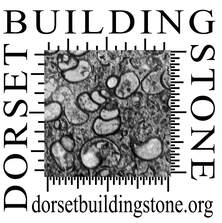Kingston Lacy House
NGR: ST977013, Lat: 50.811409, Long: -2.0333040. Lead author: PJB.
Part 1 Kingston Lacy House Exterior Stone
In 2009, members of the Dorset Geologists Association Group (DGAG) were permitted to identify and photograph the building and decorative stones of this National Trust property for publication in the DGAG Newsletter of August 2010. (see website). This is the first of a series of by area descriptions to be used as a reference guide to this property and to archive this record. In due course more photos will be available in the Secular Buildings Section of the Dorset Building Stone website so that all specimen types can be located and identified visually on site. Annotated photos (1-4) of the compass-point House fronts show the main types of stone displayed in various exterior features. More detailed comment and plain photos are included as necessary. Feedback and corrections will always be welcome. All photos are by kind permission of the National Trust.
In 2009, members of the Dorset Geologists Association Group (DGAG) were permitted to identify and photograph the building and decorative stones of this National Trust property for publication in the DGAG Newsletter of August 2010. (see website). This is the first of a series of by area descriptions to be used as a reference guide to this property and to archive this record. In due course more photos will be available in the Secular Buildings Section of the Dorset Building Stone website so that all specimen types can be located and identified visually on site. Annotated photos (1-4) of the compass-point House fronts show the main types of stone displayed in various exterior features. More detailed comment and plain photos are included as necessary. Feedback and corrections will always be welcome. All photos are by kind permission of the National Trust.
The stones used on the exterior of the building have been referred to as Chilmark stone by architectural historians, but this is ambiguous for geologists. There were two building stones quarried in the Chilmark area, the easternmost of the many different quarries in the Vale of Wardour (Wiltshire). The Main Building Stone is a glauconitic sandy limestone, in the lower part of the Portland Stone Formation. The Upper Building Stone is a white oolite similar in appearance to the Portland Freestone quarried in Dorset. Portland Stone from the Isle of Portland is also present. As described below, Barry used artificial stone in his 19th century alterations.
Chilmark/Wardour Upper (oolitic) Building Stone was in part used from 1663-7 at Kingston Hall structurally as well as decoratively sculpted (3 & 7). However, when Charles Barry clad the brick building in the Lower/Main Building Stone in the 1830’s it replicated Kingston Maurward’s Portland Stone clad example as a neo-classical Italianate Palladio style building. The new north front ground floor has tilted back slab facings of the Isle of Portland Whit Bed, containing oyster shells set on new plinths (6). The new south front terrace is also Portland Stone from Isle of Portland.
The ground-level main entrance Portland stone plinth line contains unfinished tooling and unmatched block facings (4 & 5). This is noted in the Caroe & Martin (National Trust) architect’s report on the structural errors deliberately concealed from William Bankes (or perhaps effected after he was exiled?) This also questions the sincerity of Barry’s attitude to William Bankes.
Barry had difficulty being paid properly by William Bankes and natural stone sculpting costs would have been extraordinarily high. The use of artificial stone would have saved 60% of the cost, but would have been kept a ‘trade secret’. High status natural stone building in the 18th century could be replicated artificially from the early 19th century, but records are incomplete. This is presumably because high status for patrons and a good living for architects was best assured by full discretion. Barry worked with William Ranger, who made artificial stone, which we believe can be identified under the porte cochere. (4 & 5).
Ranger patented and publicised his limestone textured block making method and produced both Portland and Ragstone textures from his Ranger’s Patent Stone Manufactory based in Lambeth. The Portland version was described as being visually indistinguishable from true Portland limestone even to professional course masons. The copyright free Creative Commons image (18) allows us to visualise the process – to which even rusticated mould plates could be inserted for any variety or number of faces that would be required to avoid detection due to any duplication. The porte cochere weathering suggests some plain blocks were possibly coated rather than being artificial stone faced per se – whilst the rusticated blocks show little or no weathering (15-17).
Man-made cement-based stone today is the basis of the world-renowned Haddenstone Ltd., and of abundant suppliers of faux facing stone to meet modern rural building regulations.
Man-made cement-based stone today is the basis of the world-renowned Haddenstone Ltd., and of abundant suppliers of faux facing stone to meet modern rural building regulations.
|
The east front (11) predates the William Bankes and Barry stone cladding and additions. This was originally the main service access, but is now a formal garden area not open to the public.
The loggia feature is always dark to the eye compared to the commonly whiter Dorset Portland Freestone seen to the left on the terrace and the loggia stone has not been publicly recorded or yet identified. The loggia base, pillar blockwork and arches are not mere cladding and may be the same as the ground floor walling on the north front. Not photo 12. The rusticated loggia facings might well be of artificial stone. There seems to be no duplicated rustication pattern in the loggia (11) or porte cochere (3) blockwork from a distance and any architect would have sensibly precluded it if quietly using Ranger’s stone. |
Kept at a safe public distance, the fruit-filled garden urns (13) seem modelled after the contemporary ceramic Coade Stone designs and may have been made to order from Austin & Seeley Ltd., who used a cement mixture similar to Ranger. The Victorian popularity for artificial garden stone features was much in favour and lasted well beyond Albert and Victoria’s choices for Osborne House in the 1880’s.
However, the porte cochere can be readily examined and very interestingly Rayner and Barry also used rusticated mouldings at their contemporary 1835 new-build of St. Mary's church at Westley, Nr. Bury St. Edmund's in the tower’s top stage. (14) St. Mary's is the first recorded joint use by young architects Barry and Rayner, of both concrete blocks and artificial rusticated stone. Furthermore, the St. Mary's plain blockwork was 'lime and sand coated'. The Kingston Lacy porte cochere weathering suggests some plain blocks possibly coated rather than being artificial stone faced per se - whilst the rusticated blocks show little or no weathering? (15-17) Clearly Rayner was producing both kinds of block for Barry whilst the St. Mary's church and Kingston porte cochere plus loggia were being built. Rayner patented and publicised his limestone textured block making method and produced both Portland and Ragstone textures from his Ranger’s Patent Stone Manufactory, based in Lambeth.
|
Kept at a safe public distance, the fruit-filled garden urns (13) seem modelled after the contemporary ceramic Coade Stone designs and may have been made to order from Austin & Seeley Ltd., who used a cement mixture similar to Ranger. The Victorian popularity for artificial garden stone features was much in favour and lasted well beyond Albert and Victoria’s choices for Osborne House in the 1880’s.
Our final suspicious photo (19) shows some of an enormous unbroken but thinnish mounting plate or bench and duplicated rustication on one very large supporting plinth stone. A top left plinth corner crack also looks rather more cement like than fractured granular limestone. References:
1) Kingston Lacy – The National Trust (1994). 2) Caroe, M. B. “Kingston Lacy, Dorset: an architectural case history.” ASCHB Transactions 10 (1984). 3) References to William Rayner artificial stone are available via various websites. |
Part 2. The Building Stones of Kingston Lacy.
Rock Thin-sections: Strong sparitic cementation and potential porosity are best revealed in the Portland Whit Bed slide. Cementation in XPL is by pastel-shaded inter-granular colouring of sparite and potential porosity by blue/green staining added for this purpose is also very visible in PPL. In the other two thin sections intergranular porosity is coloured in black. On rotation of the XPL microscope stage sparite cement has undulose-like extinction along the cleavage. In PPL this sparite cementation is revealed only by low relief of the sparite and any potential porosity by the ‘transparency' of intergranular spaces. Wardour Upper - the oolitic limestone, in XPL has the sparitic cementation tinged brown with micrite and in the Wardour Lower - glauconitic sandy limestone, the cement can be far more brown than at all sparitic looking. Even in these very condensed images seen here, the lack of sparite in relation to micrite in the cement is easily seen and it is fair to say that the so sparitic well-cemented Portland, will be the harder and least easily weathered over long periods of time. A thin section at high magnification may reveal inter-cavity porosity on that plane but not of course necessarily in 3D.
As can also be seen comparing both our scaled photos with each other and or with thin sections, the grain size of the same named stone from different quarries, or even the same quarry, can vary greatly. So porosity and resistance to weathering and organic coating as building stone is not guaranteed by stone name alone. (For more on textures please see References below and website section on how we study building stone.)
As can also be seen comparing both our scaled photos with each other and or with thin sections, the grain size of the same named stone from different quarries, or even the same quarry, can vary greatly. So porosity and resistance to weathering and organic coating as building stone is not guaranteed by stone name alone. (For more on textures please see References below and website section on how we study building stone.)
Scaled Close-ups; 20 x 20mm showing commonly visible variations in bioclastic texture and grain size of these three stones. (For better texture, cementation and porosity of matrix – please see rock thin-sections below and )
Rock Thin-sections; cementation and potential porosity are revealed - in PPL by intergranular black spacings and cementation by the pastel colouring of intergranular sparite. (For more on textures please see References below and website section on how we study building stone.)
Wardour Main Building Stone. Plane-polar and crossed-polar (PPL/XPL) photos by Mike le Bas, University of Leicester. No.120261 Canon 0321/0322 x 2.5 obj @ 3-121 Scale 0.1mm. PJ
‘Wardour Upper oolitic Building Stone. PPL/XPL, Photo W.G.Townson no. UQC2 (revised), Canon 0772/0771 x 2.5 obj @ 3-121, scale 0.1mm, PJB.
Portland Freestone Whit Bed 1.2m below top. PPL/XPL, Photo MR House PL Ltd. no. 15, Canon 0238/0240 x 2.5 obj @ 12-119, scale 0.1mm (not shown but as previous pairs).
References:
1) A Colour Atlas of sedimentary Rocks – Adams et al.
2) A Colour Atlas of Carbonate Sediments and Rocks Under the Microscope – Adams et al. 3) http://dorsetbuildingstone.weebly.com/portland-limestone-ndash-wilts-chilmark.html
4) http://dorsetbuildingstone.weebly.com/portland-stone---dorset.html
1) A Colour Atlas of sedimentary Rocks – Adams et al.
2) A Colour Atlas of Carbonate Sediments and Rocks Under the Microscope – Adams et al. 3) http://dorsetbuildingstone.weebly.com/portland-limestone-ndash-wilts-chilmark.html
4) http://dorsetbuildingstone.weebly.com/portland-stone---dorset.html
Part 3. Tabulation of Decorative Stone at Kingston Lacy
This check-list provides approximate positions of exhibited stone features recorded along the regular Visitor Route through this N.T. House, up to the above date. Portable pieces are commonly moved or not on display. Neither volunteer guides nor their handbooks are intended to assist you regarding I.D. of any but polished stone/marbles as described in the N.T. Guidebook. In this four-sides Tabulation, descriptions to all but building stone have been removed to provide just an ‘all-in-one-check-list’ of some 50 or so decorative stone exemplars. (The House is open throughout March-October 11-5.)
There were only one or two commercial ‘true marbles’ ever quarried here in the U.K. and so imported true marbles and much polished stone came from overseas. William Bankes lived permanently in Italy from 1841. He personally selected ornaments, had replicas made and shipped his bulk stone purchases from Venice to fit measurements provided by his Steward on site. Italian Trade Names dominate our useage for most decorative stone, athough fashionable French versions have held sway. Geological names allow us scientific accuracy but those too have seen changes over this time. The Commercial Trade divides polished stone into both Marbles; serpentinites & calcareous soft stone and Granites; hard intrusive stone. Otherwise Stone; alone, includes limestone, sandstone, quartzite, slate, alabaster, travertine, true onyx, & tuff. Architects also occasionally adopt their own stone terminology, whilst anyone in doubt, including the National Trust, will commonly use the word marble for any decoratively polished stone.
Rock thin sections and high-tech mass spectroscopy can of course best determine texture and mineral content if stone is available. But for our purposes, close-up photo-comparison with known examples works very well, so close-up photography in further Kingston Lacy parts of this Newsletter will fill in the I.D’s. and descriptions of stone located as below, room by room. Knowledgeable feed-back is always welcome.
There were only one or two commercial ‘true marbles’ ever quarried here in the U.K. and so imported true marbles and much polished stone came from overseas. William Bankes lived permanently in Italy from 1841. He personally selected ornaments, had replicas made and shipped his bulk stone purchases from Venice to fit measurements provided by his Steward on site. Italian Trade Names dominate our useage for most decorative stone, athough fashionable French versions have held sway. Geological names allow us scientific accuracy but those too have seen changes over this time. The Commercial Trade divides polished stone into both Marbles; serpentinites & calcareous soft stone and Granites; hard intrusive stone. Otherwise Stone; alone, includes limestone, sandstone, quartzite, slate, alabaster, travertine, true onyx, & tuff. Architects also occasionally adopt their own stone terminology, whilst anyone in doubt, including the National Trust, will commonly use the word marble for any decoratively polished stone.
Rock thin sections and high-tech mass spectroscopy can of course best determine texture and mineral content if stone is available. But for our purposes, close-up photo-comparison with known examples works very well, so close-up photography in further Kingston Lacy parts of this Newsletter will fill in the I.D’s. and descriptions of stone located as below, room by room. Knowledgeable feed-back is always welcome.
Building Stone.
1.) Chilmark Lower or Main Building Stone – Ashlar cladding of external walls.
2.) Chilmark Upper Building Stone – Major ‘coat of arms’ sculptings of N. & W. pediments and Inner Hall over-mantel.
3.) Portland Stone – South terrace, North-front pediment and North garden wall.
1.) Chilmark Lower or Main Building Stone – Ashlar cladding of external walls.
2.) Chilmark Upper Building Stone – Major ‘coat of arms’ sculptings of N. & W. pediments and Inner Hall over-mantel.
3.) Portland Stone – South terrace, North-front pediment and North garden wall.
|
Decorative Stone
Entrance Hall. 3.) Columns - 4.) Table-tops - 5.) Table paw feet - 6.) Table legs - 7.) Marble bust - 8.) Basket jardinieres - Halls & staircase. 8.) Chequerboard flooring - 9.) Decorative over-mantel - 10.) Radiator fronting - 11.) Torcheres - Audit Room. 11.) Fireplace - Loggia Half-Landing. 12.) Plinth supporting Dame Mary and stair-rail tops - 13.) Hanging lamp bowl - Staircase balustrade. 14.) Turned pillars - First Floor Landing. 15.) Five doorways, ceiling domes, decorated candelabra & tapered bird figures - 16.) History of Kingston Marble Plaque - 17.) Busts of Augustus & Marcus Agrippa - 18.) Cantelabras flanking Saloon Doors - 19.) Pair of sculpted birds - Library. 18.) Fireplace - Drawing Room. 19.) Four matching doorways; yellow bright - 20.) Four matching doorways; yellow dull – 21.) Four matching doorways; red/mauve - 22.) Saloon doorway - 23.) Console tables - 24.) Console tables; central medallions - Coffee Loggia. 31.) Coffee tables - 32.) Light source - |
Dining Room.
25.) Fireplace - 26.) Doorways; frames - 27.) Doorways; pediments - 28.) Fireplace - 29.) Vases - 30.) Side table red & white; Saloon. 33.) 1789 Fireplace - 34.) Marble niches - 35.) Marble niches – shell sculptures - Spanish Room. 36.) Fireplace - 37.) Fireplace pendant garlands - 38.) Pietra dura cabinet - State Bedroom. 39.) Fireplace - Upper Staircase – Half-Landing. 40.) Half landing plinth to newel - plant & lizard carvings - 41.) Roman styled candelabrum - 42.) Pair of stands - 43.) Heraldic lion reliefs - Top Landing. 44.) Sicilian Cararra steps & balustrade - 45.) Dancing Putti - 46.) Times of Day figures - 47.) Classic sculpted heads - Corridor to Attic Staircase. 48.) Two pre-William side tables - 49.) The Buffet or Water closet - 50.) Fan-shaped exterior light - Billiards Room. 51.) Standing god to Ramses II figure - 52.) Black Egyptian bust - 53.) Deir el Medina stelae - 54.) Glass cased obelisks - The Garden. 54.) Aswan obelisk - and Sargophagus - 55.) Lions, 56.) Well-heads and Plinths - 56.) Well heads; weathered - 57.) Vases - |
Easily accessible References:
1)Monica T. Price & Lisa Cooke - The Corsi Collection of Decorative Stones - website http://www.oum.ox.ac.uk/corsi/
2) Price, Monica, Decorative Stone - The Complete Sourcebook. Thames & Hudson Remaindered New & Used via Amazon. Also USA edition; with title reversed in paperback.
3) Rogers, Patrick: The Beauty of Stone - The Westminster Cathedral Marbles. Only from the Cathedral shop.
1)Monica T. Price & Lisa Cooke - The Corsi Collection of Decorative Stones - website http://www.oum.ox.ac.uk/corsi/
2) Price, Monica, Decorative Stone - The Complete Sourcebook. Thames & Hudson Remaindered New & Used via Amazon. Also USA edition; with title reversed in paperback.
3) Rogers, Patrick: The Beauty of Stone - The Westminster Cathedral Marbles. Only from the Cathedral shop.
Part 4: Kingston Lacy Garden Stone
The south lawn garden stone is a Grand Tour Collection illustrative of prestigious historic monuments and ornamental garden pieces sculpted for display in Mediterranean climates; so subsequent weathering here in Dorset, is perhaps the most distinctive feature for visitors today. To minimise further damage from frost the Trust keep the entire collection of garden sculptures boxed in for up to five months in the Winter. Fortunately, all the garden stone but for the Istrian limestone, is available to view close up, clean and polished inside the House. (and that begins in Part 5.)
All photos are by kind permission of the National Trust.
All photos are by kind permission of the National Trust.
Rosso Veronese Stone lions guard the lower stairway to the Garden terrace of Portland Stone. A pair of tall Verona Stone urns on bronze tortoises and many lichen coated Carrara marble urns border the gravel drive. The stairway to the lawn, between stone mounted bronze lions, separates more Carrara vases and Verona Stone well heads.
|
The much weathered Rosso Veronese lions now reveal exaggerated stylolites, algal texture decay and the colouring is masked by today’s organic cover. In their home climate they would still display an evident structural solidity as is well seen represented by features inside the House.
The very organically coated tortoise mounted vases and plinths to the garden staircase are also of a Rosso Verona marble. |
The matching pair of well heads; one much weathered clean limestone, are of ‘Istrian marble’ and were originally a pure white, highly polished limestone as translucent as Apuan white marble. However, spalling of this polished facing at Kingston has almost entirely been weathered away, leaving a rather coarse limestone finish to the elaborately carved faces and emblems. (See the middle close-up photo for remaining marbled white finish.) This stone was incidentally the main building stone of Venice and sourced from almost directly across the Adriatic from Eastern Europe.
There are 29 known Aswan granite obelisks remaining and this Google images photo illustrates the risks involved in extraction of such great weights,
Gifted to William Bankes in 1822, the complete Statuary Aswan Granite Sarcophagus is also heavily engraved with hieroglyphics. (note the reverse Lewis lamp holes in the lid.)
The garden terrace and House south wall stone has considerable lichen coverage and fenced off in winter.
However, using a good hand lens and better still using an LED loupe, the texture of Portland Freestone can be revealed. More Portland Freestone has been added between the House and the present National Trust shop. (see images below)


